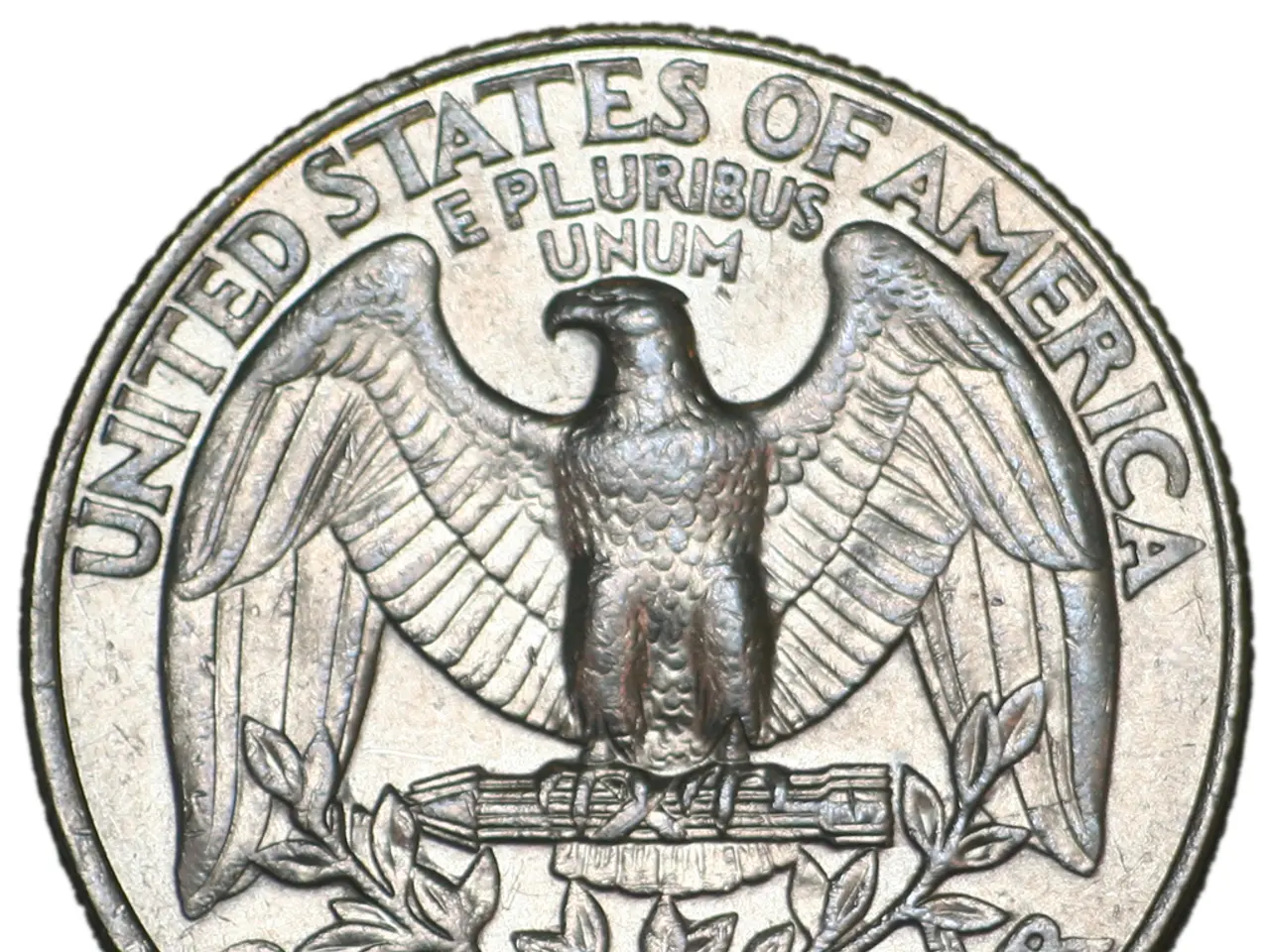Bonds Give Back Ground Following Yesterday's Progression
The U.S. economy rebounded by more than expected in the second quarter of 2025, with real GDP surging by 3.0 percent. This robust growth was primarily driven by a decrease in imports and an increase in consumer spending.
The Federal Reserve, in its widely expected decision, chose to leave interest rates unchanged. However, the decision may have implications for trading, with potential impact from reports on weekly jobless claims and consumer price inflation.
Fed Chair Jerome Powell has stated that the central bank has not made a decision about lowering rates in September. Not all Fed governors agree with this decision; Michelle Bowman and Christopher Waller prefer a rate cut of a quarter percentage point.
The Commerce Department reported the U.S. economy's rebound, with the rebound primarily reflecting a decrease in imports and an increase in consumer spending. The strong GDP growth and ongoing inflation signals, though, are normally bearish for bonds and push yields higher.
Treasury yields climbed after the release of upbeat U.S. economic data in July 2025, despite the Federal Reserve keeping interest rates unchanged. The climb in Treasury yields was driven by strong economic data that heightened expectations for sustained growth and inflation, which markets interpreted as a reason for yields to rise.
Mixed labor data, such as downward revisions to previous months’ job growth, created some short-term bond-friendly conditions. However, the overall economic momentum dominated Treasury yield moves.
The ADP report showed private sector employment in the U.S. increased by more than expected in the month of July, with a jump of 104,000 jobs. Economists had expected private sector employment to climb by 78,000 jobs compared to the originally reported dip of 33,000 jobs for the previous month.
Despite the initial strength among treasuries, selling pressure re-emerged late in the session following Powell's comments about September rate decisions. The yield on the benchmark ten-year note climbed 4.6 basis points to 4.376 percent.
Bond prices regained some ground in afternoon trading after an early slump. The rebound by real GDP in the second quarter primarily reflected a decrease in imports and an increase in consumer spending. The U.S. economy's rebound was reported by the Commerce Department.
In summary, the U.S. economy rebounded stronger than expected in the second quarter of 2025, with real GDP surging by 3.0 percent. This robust growth was primarily driven by a decrease in imports and an increase in consumer spending. The Federal Reserve chose to leave interest rates unchanged, but the decision may have implications for trading. Treasury yields climbed after the release of upbeat U.S. economic data, reflecting expectations for sustained growth and inflation. The ADP report showed private sector employment in the U.S. increased by more than expected in July.
Given the strong economic growth and ongoing inflation, the U.S. business sector may see an increase in investing activities, as the robust GDP growth and heightened expectations for sustained growth can provide favorable conditions for financial expansion. Consequently, the rise in Treasury yields, driven by the upbeat economic data, could attract more investors seeking higher returns in the finance industry.




